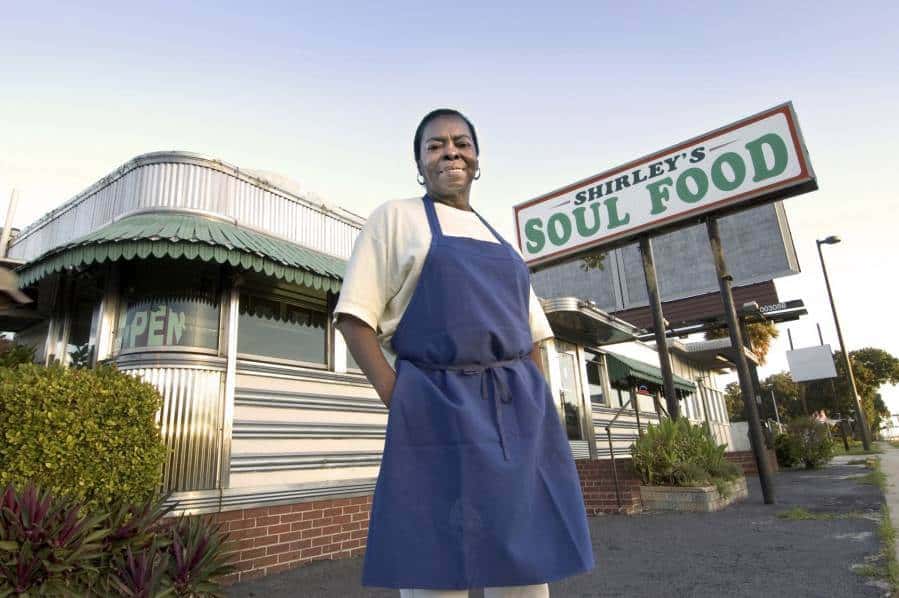Study finds reminding people of racial disparities helps
Americans consistently believe that poor African Americans are more likely to move up the economic ladder than they actually are, a new study shows.
People also overestimate how likely poor white people are to get ahead economically, but to a much lesser extent than they do for Black people.
“It’s no surprise that most people in our society believe in the American Dream of working hard and succeeding economically,” said Jesse Walker, co-author of the study and assistant professor of marketing at The Ohio State University’s Fisher College of Business.
“But many people don’t know how much harder it is for African Americans to achieve that dream than it is for white people.”
The good news in the study was that making people aware of economic racial disparities, or merely having them reflect on the unique challenges that Black Americans face in the United States, helped people calibrate their beliefs about economic mobility.
Walker conducted the study with Shai Davidai, assistant professor of management at Columbia Business School at Columbia University. Their findings were published this week in the journal Personality and Social Psychology Bulletin.
The researchers conducted six studies with a total of 1,761 U.S. adults, who participated online.
In one study, they asked participants to estimate the chances that a randomly selected child born to a family in the lowest income quintile (0 to 20%) would rise to one of the four higher income quintiles. They made two predictions, one for a white child and one for a Black child.
Results showed that participants overestimated upward mobility for the white child by about 5%, but overestimated mobility for the Black child by about 16%. white Americans’ actual likelihood of moving up from the bottom quintile is 69%, compared to 52% for Black Americans.
The researchers also measured how likely the participants thought the randomly selected poor child would be able to rise to the top of the economic heap – one of the two highest income quintiles (those in the top 40% in terms of income). Here participants again overestimated the odds of the Black child reaching those heights, but actually underestimated the chances of the white child doing so.
It wasn’t just white Americans who held these misperceptions. A separate study found that Black participants were similarly inaccurate in their estimation of a Black child’s probability of moving out of poverty.
While the results cannot say why this happened, Davidai said it may be that Black Americans – particularly those in the lower economic groups themselves – want to believe in their chance at economic success.
“No one wants to believe there is no American Dream out there for them,” Davidai said.
Results from other studies in the series suggested that people can more accurately assess the chances of poor Black people moving up if they are reminded of economic racial disparities or even just think about the problems Black people face in the United States.
In one study, participants were shown one of two graphs before they estimated the probability of poor white or Black Americans moving up economically. One showed the distribution of wealth by income quintiles, revealing that the richest 20% of Americans own 81% of private wealth.
The remaining participants were shown a graph of the distribution of wealth in the United States by ethnicity, revealing that white people own 89% of private wealth, compared to Black people, who own 1.3%.
In this study, those who were shown the graph highlighting general economic inequality overestimated a poor Black person’s chances of moving up the economic ladder by about 20%. But those who were shown the graph revealing racial economic inequality were quite accurate in their beliefs about economic mobility.
“Making people think about the racial economic disparities in this country made them much better able to estimate the real chances of Black Americans getting ahead economically,” Davidai said.
Another study showed that considering the general social challenges that Black Americans face in the United States – without any reference to economics – made people more accurate in their mobility estimates.
But it wasn’t just information about the current situation of African Americans that influenced how participants viewed the possibility that a Black child could get ahead economically.
In one study, participants read one of two short articles: one discussing the amount of progress Black people have made in the United States in the past century, or one about how much progress still needs to be made toward racial equality. Both focused on social rather than economic progress.
People who read the positive story about racial progress believed that a Black child born to a family in the poorest 20% of Americans was more than twice as likely to move up the economic ladder than those who read about the lack of progress.
Still, people who read either article overestimated the chances of the Black child from a poor family achieving more economic success. Reading either article didn’t change what people thought about the white child’s chance of moving up.
“Because people think Black people have made progress toward social equality, they assume that there must have been positive changes in economic mobility, too,” Davidai said.
In this study, participants who were Black showed the same tendencies to overestimate the Black child’s chances of success as did white participants, no matter which article they read – but they were much more accurate than the white people.
Overall, the results of the six studies have important implications, Walker said.
“If you think someone is more likely to move up the economic ladder than they actually are, it is a lot easier to blame them for not being successful,” he said.
“These misperceptions may make people less likely to support policies that may actually help African Americans move up and address the large racial wealth gap that exists in America.”

